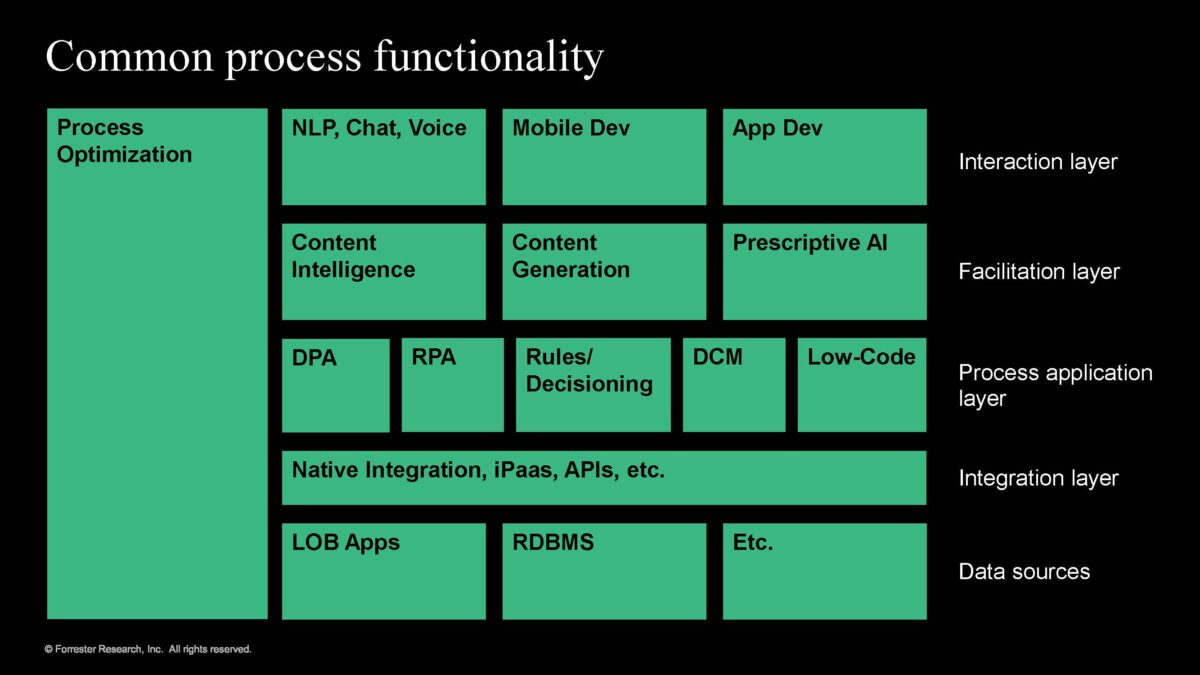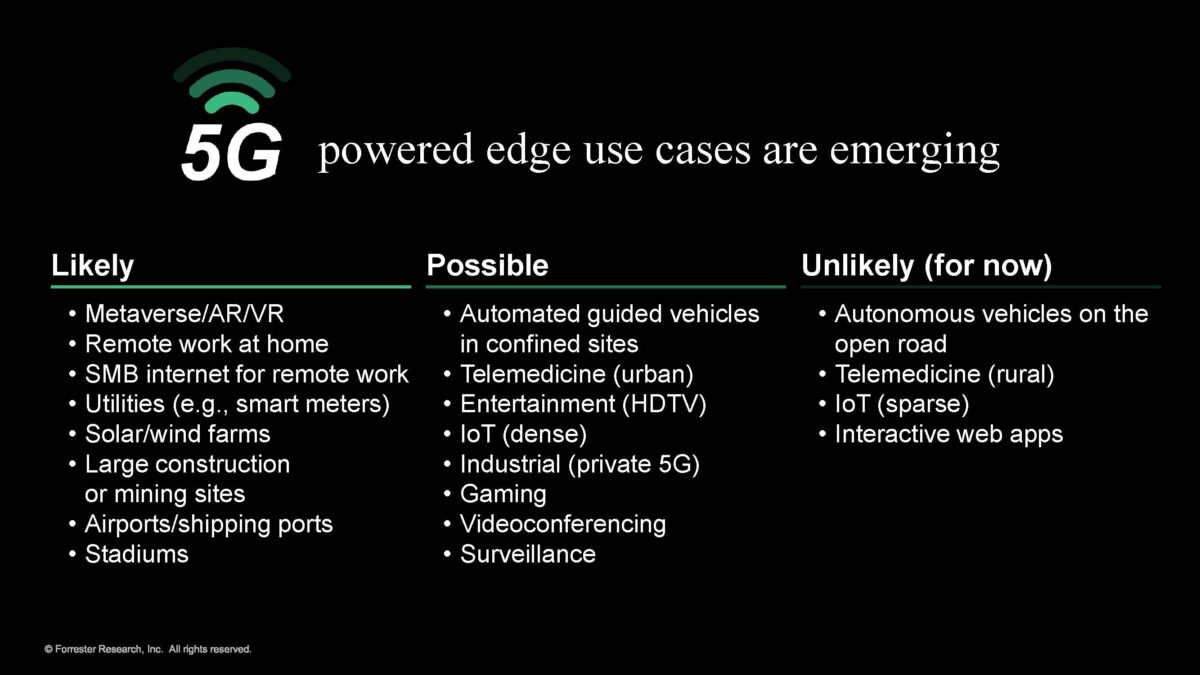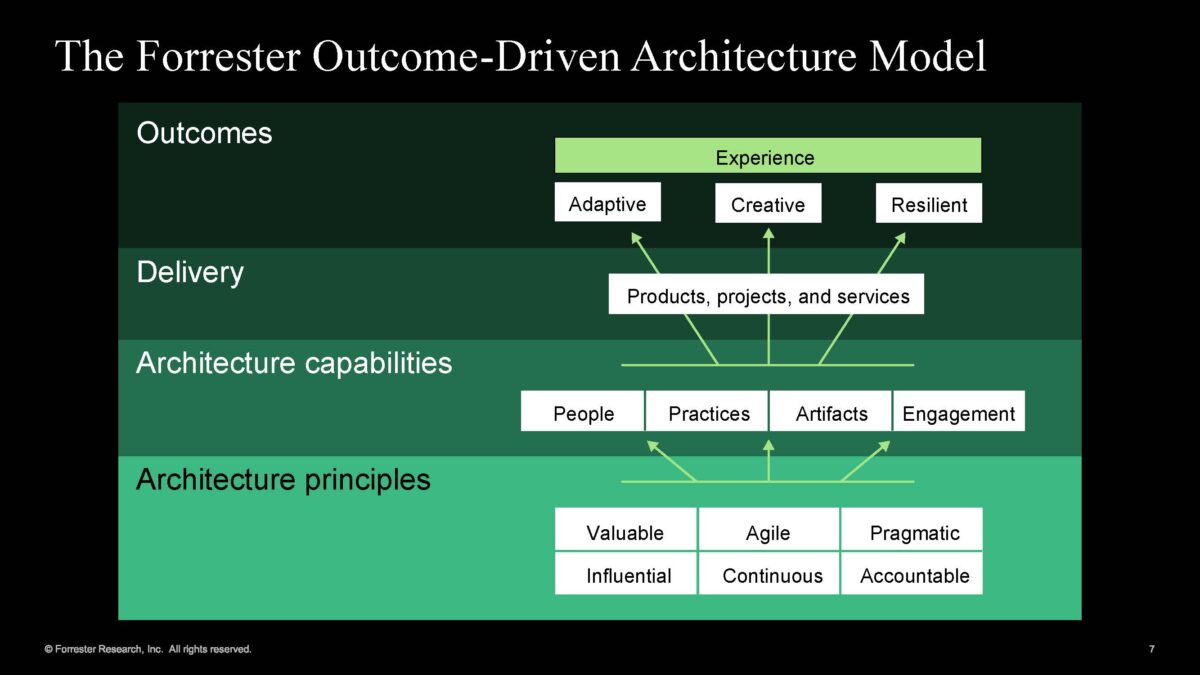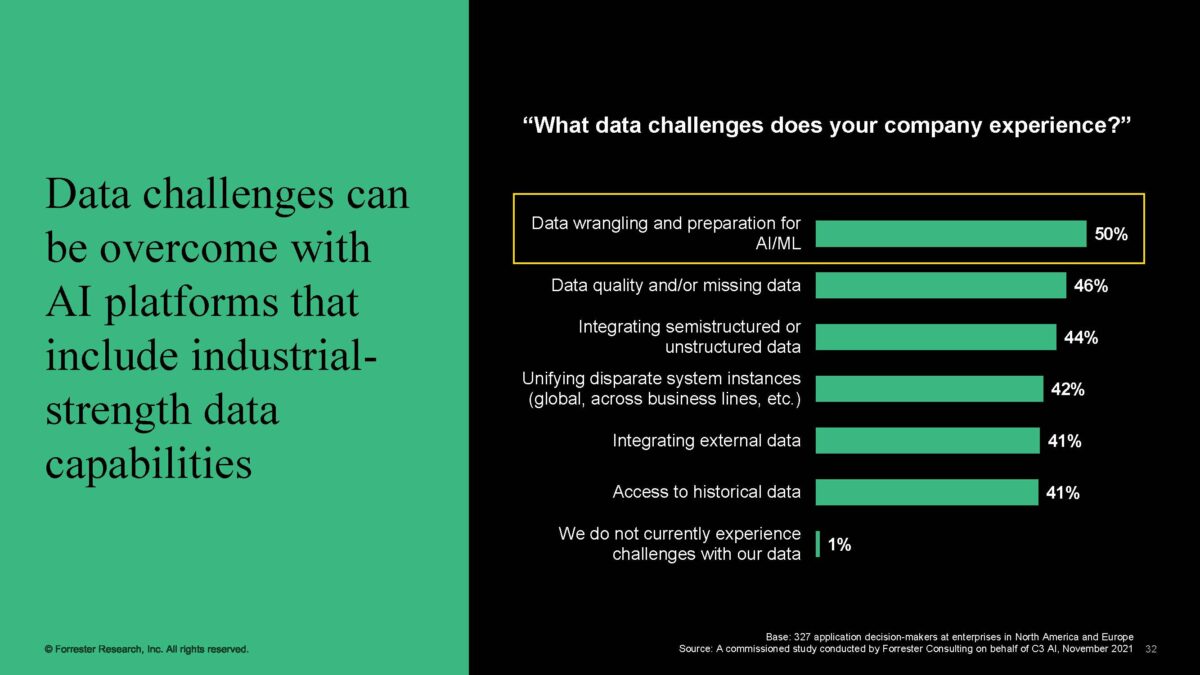Takeaways from Forrester’s Innovation and Technology North America
What Wins? Truly Digital > Digitally Enabled
Forrester CEO George Colony notes that today’s tech powerhouses– Amazon, Google, and Apple – have a direct consumer presence. These firms contrast directly with those who have fallen from the top tier after abandoning the direct consumer connection, suggesting that this direct connection inspires and enables customer obsession, which drives the innovation that makes the competitive difference.
For illustration, George contrasted his digital content provider (truly digital) and traditional cable carrier (digitally enabled)– in both the quality of service and the level of human interaction required to resolve an issue. While not all of us will have a direct consumer connection in our business (many technology services providers come to mind), it’s a thought-provoking observation for anyone involved with transforming a business model.
Recession is the wrong time to cut investment in digital
Opinions differ on whether a recession is looming or already here, but the message from prior recessions is clear: those who continue to invest in their customer-obsessed digital transformations will leave others behind when the economy emerges.
Matt Guarini noted these customer-obsessed tech companies see benefits not only financially, but with customers and employees relative to those who are not focused the same way..
Revenue: 2.5x
Profitability: 2.2x
Customer Retention: 2.2x
Employee Engagement 2.2x
Customer success: customer obsession and platform strategy
Liz Herbert was joined by Devetta James, Senior Vice President of Customer Operations, AmerisourceBergen, to discuss platform operations. According to Liz, future fit companies are more than twice as likely to take an open, scalable approach to platforms versus traditional businesses. And while “platforms” is a broad and overused term, Liz tells us that strategic platforms – those which drive change – deserve the most attention and budget.
Devetta emphasized that AmerisourceBergen’s platform integration initiative aimed to improve the customer experience across business units. She also noted that “everyone needs to understand they are part of the customer journey.” While perhaps the need for change management was underestimated at the outset, her team responded with town halls, videos, and entertaining before & after scenarios: “all of the above,” she told us, to ensure the message came across. For metrics, Devetta began with customer satisfaction/ net promoter scores- because these metrics point out where the improvement opportunities lie.
The product approach
The next day, Charlie Betz, whose Enterprise Architecture presentation is discussed below, spoke from the main stage to discuss a product approach to IT. Charlie points out that the failed “IT as machine” metaphor now trends toward product teams with dedicated resources and even an emerging view that a product team leader should be a “mini-CEO.”
Leadership Notes from the Technology Strategy Impact Award Winner
Anu Khare of the Oshkosh Corporation was honored for (from Forrester’s press release) “a future fit tech strategy that optimizes the organization’s core technology, establishes new digital business capabilities, and improves its cybersecurity posture. His impressive presentation is worth a discussion.
Anu emphasized three core principles: business value, platforms, and people. He focused on automation: the massive automation of 55,000 hours of IT work and the intelligent automation- of non-IT work – roughly 170,000 hours of work year-to-date.
The decibel level of cost was very high – we wanted to speak more loudly about value.
For business value, only two metrics count: hard dollars which contribute to operating income, and the number of hours saved by automation. Both metrics are now reported at the board level. The IT team is now focused on “demand generation” – they conduct workshops with the business and help to generate the ideas.
The approach to people and skill enabled by
- a digital learning program, from which catalog people can select any four courses they like each year, and
- their approach to “taking a risk” with people for the right kind of result- e.g., a legal data analyst with a passion for data science, two years later, is one of the top data scientists in the company.
His partner strategy is “surgical” – to buy capability Oshkosh doesn’t have – rather than relying on one overarching partner who provides everything. The approach to funding proves their progress:
“In 2018, we (IT) were requesting funding. In 2022, funding is coming to us.”- Anu Khare, Oshkosh Corporation
Process Automation is Table Stakes: “Software is an Expression of the Business”
Presenters Renee Taylor and Rob Koplowitz state that automation refers to “business models with technology at the core.” Software becomes an expression of the business.
Why is a future-proof automation strategy imperative?
- As we’ve (re-)learned over the past few years, we don’t know what external disruption is coming next (another Forrester analyst does an excellent job of pointing out that our inability to foresee a particular disruption coming doesn’t make it a “Black Swan”)
- Unfortunately, most of our automation is based on point solutions and users find it somewhere between disappointing and non-functional.
Forrester survey data now shows that ¾ of process optimization efforts are focused on accelerating digital transformation efforts or the improvement of customer experience, in contrast with prior years when cost and productivity were at the forefront.
“Automation without optimization is a fool’s errand”
Renee and Bob offered proven implementation counsel, including
- “don’t pave the cow path,” and
- “we don’t have a technology opportunity. We have a process opportunity.” Reengineering needs to include the business, usually with an automation opportunity in mind.
“Build your automation fabric on a bedrock of process excellence”
Forrester depicts a four-layered construct from application through process through automation to interaction and creation. Processes must be optimized from the data sources, through the integration layer, through the process application layer (DPA, RPA, low-code, et al.) through the facilitation layer (content intelligence and generation, and prescriptive AI) and interaction, whether through chat, voice, mobile or app development.

The edge is the next gold rush
The edge is an area of particular interest to GTSG as an essential component of infrastructure delivery strategy, development of which is one of our core competencies.
Forrester defines edge computing as “a family of technologies that distribute application data and services where they can best optimize outcomes in a growing set of locations and connected assets” (emphasis added).
Edge benefits are derived from
- real-time insights from mobile, IoT, and other devices
- collection and AI analysis of edge equipment for employee empowerment
- avoidance of network latency, and expensive network connectivity to remote locations
Analyst Michele Pelino uses a four-edge taxonomy
- provider edge (e.g., 5G, data center)
- enterprise edge (e.g., e-commerce, WAN)
- operational edge (from industrial automation to AR/VR field service)
- engagement edge (from streaming video to employee engagement)
She also positions edge as having evolved from a pendulum swing from locally optimized systems, to centralized IT, to edge systems optimized for local operations and global efficiency.
Digital transformations will be powered using edge, IoT, and 5G.

Michelle notes several concerns, or cautions:
- a fragmented array of industry use cases
- with voracious data appetites
- from a fragmented marketplace of providers
Unsurprisingly, barriers to adoption are generally non-technical – organizational issues, management complexity, and even a common understanding of the edge.
Michelle closes with a call to action that begins with the definition of a comprehensive edge strategy – the absence of which will be a competitive disadvantage in a world of future-fit competitors.
The right approach to enterprise architecture
We’re particularly interested in this one. When we came to Forrester with an EA question a few months ago, Charlie Betz netted down his view of EA to the
- wrong approach (framework enforcement) and the
- right approach (enabling the business).
To truly add value, EA must “escape the ivory tower” and suggests we adopt Forrester’s Outcome-Driven Architecture model:

On principles:
- When discussing value, Charlie repeats a bit of advice he got from an old mentor – every senior conversation should boil down to “top line, bottom line, or risk”
- We shouldn’t forget that EA typically leads by influence rather than authority
- Architecture needs to be accountable, whether by net promoter scores or the proactive practice of seeking out feedback.
On capabilities:
- People are the key, of course, and certainly, EA will produce artifacts, but artifacts for their own sake are never his emphasis. Charlie applauds one EA chief for specifying, “we have five distinct service offerings for EA in the enterprise service portal (ServiceNow).”
- He again emphasizes accountability and the presence of a customer relationship function.
AI implementation success factors
VP Mike Gualtieri shared his perspective on ten critical success factors in AI implementation. He noted that his client inquiries have shifted from “what” to “how” – that is to say, many are implementing, and most are getting results – as Mike says, it’s not “science fair” any longer.
It’s common for a single enterprise use case to yield millions of dollars in top-and/or bottom-line outcomes.
From a compute and storage perspective, this is one of the fastest-growing workloads on the planet. And while there are challenges to these implementations, we can overcome most by adopting best practices. We’ll highlight several:
- Prioritize high- ROI use cases: don’t let data scientists select the initiatives in the absence of LOB involvement
- Insist on access to enterprise data…”enterprise data is super rich, as is needed for successful, pervasive AI…algorithms get all the press, but it’s data that leads to success”
- Operationalize with ModelOps (aka MLOps): unlike non-AI software, ML models must be monitored, retrained, and often remodeled- an e-commerce model might be updated daily.
- Keep humans in the loop to implement responsible AI: the ML doesn’t have intuition, and we’re not compelled to do what the AI tells us to do.
- Invest in an AI platform:

- Make AI infrastructure bottlenecks disappear: the cloud is not always right- if you have a data center, on-prem may be the correct answer. (If you’d like, GTSG can talk to you about cost, performance and latency implications of any workload.)
Predictions 2023: Is there a new normal?
It’s an unusual time – financial concerns, geopolitical concerns, a looming recession, and a talent shortage. A sampling of what we heard in a 30-minute panel:
- Competing forces will shape consumer behavior:
-
- Relief that the pandemic is behind us, yet
- Most consumers believe that there will be a recession
Spending will increase by 5%; we heard it called “revenge spend” on “stockpiled savings.”
However: consumers will be more selective, having been understanding of difficulties during the pandemic. So, in 2023, brand forgiveness will decline.
- On the workforce: there’s a potential for a return to the office to go awry, with
-
- 68% of employees currently working at home want to continue, yet
- 50% of executives want to keep their options open concerning return to the office.
- We’re going to face the first “talent-constrained recession.” There’s a chance of a “whipsaw” – layoffs happening, yet there are simultaneously open requirements. Forrester advises clients to be steady with their approach to their people; employees will remember how they and others were treated.
* * * * *
We hope this summary has been of value. If you’d like to discuss any of these observations, just let us know at Partners@GTSG.com. Thank you.

